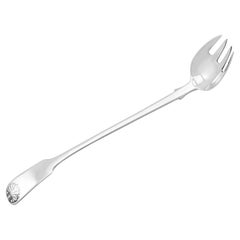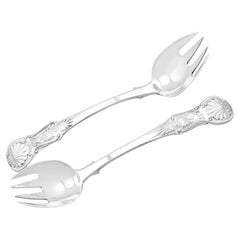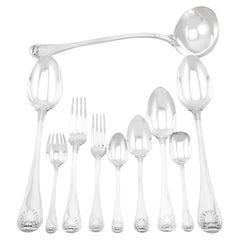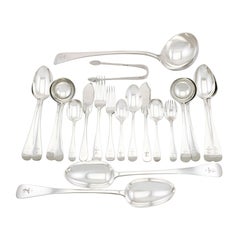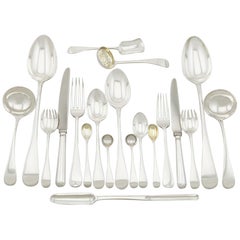Runcible Spoon
Antique 1860s British Victorian Serving Pieces
Silver, Sterling Silver
Antique 1850s English Victorian Tableware
Silver, Sterling Silver
Antique 1860s European Victorian Serving Pieces
Sterling Silver
Recent Sales
Antique 1880s British Victorian Tableware
Sterling Silver
Antique 1890s British Victorian Sterling Silver
Silver, Sterling Silver
Mid-20th Century British Art Deco Dining Room Sets
Sterling Silver
Early 20th Century English Georgian Sterling Silver
People Also Browsed
2010s English Louis XVI Beds and Bed Frames
Cane, Wood
Antique 1890s Italian Neoclassical Revival Beds and Bed Frames
Hardwood, Paint
20th Century English Georgian Tableware
Silver, Sterling Silver
Antique 1840s English Victorian Sterling Silver
Sterling Silver
Antique 1890s English Regency Revival Sterling Silver
Sterling Silver
Antique Mid-19th Century British Victorian Tea Sets
Silver
Antique 1850s English Victorian Sterling Silver
Silver, Sterling Silver
20th Century American Art Nouveau Sterling Silver
Sterling Silver
Antique 1850s English Early Victorian Tableware
Sterling Silver
Finding the Right Sterling-silver for You
Dining and entertaining changed drastically when we began to set our tables with sterling silver for holiday gatherings, wedding receptions, engagement parties and, in some of today’s homes, everyday meals.
Often called the “Queen of metals,” silver has been universally adored for thousands of years. It is easy to see why it has always been sought after: It is durable, strong and beautiful. (Louis XIV had tables made entirely of silver.) Sterling silver is an alloy that is made of 92.5 percent silver — the “925” stamp that identifies sterling-silver jewelry refers to this number. The other 7.5 percent in sterling silver is typically sourced from copper.
Neoclassical-style sterling-silver goods in Europe gained popularity in the late 18th century — a taste for sterling-silver tableware as well as tea sets had taken shape — while in the United States, beginning in the 19th century, preparing the dinner table with sterling-silver flatware had become somewhat of a standard practice. Indeed, owning lots of silver goods during the Victorian era was a big deal. Back then, displaying fine silver at home was a status symbol for middle-class American families. And this domestic silver craze meant great profitability for legendary silversmith manufacturers such as Reed & Barton, Gorham Manufacturing Company and the International Silver Company, which was incorporated in Meriden, Connecticut, in 1898, a major hub of silver manufacturing nicknamed “Silver City.”
Today, special occasions might call for ceremonial silver designed by Tiffany & Co. or the seductive sterling-silver cutlery from remarkable Danish silversmith Georg Jensen, but there really doesn’t have to be an event on the calendar to trot out your finest tableware.
Event- and wedding-planning company maestro Tara Guérard says that some “investment pieces,” such as this widely enamored alloy, should see everyday use, and we’re inclined to agree.
“Sterling-silver flatware is a must-have that you can use every single day, even to eat cereal,” she says. “Personally, I want a sterling-silver goblet set for 12 to 20; I would use them every time I had a dinner party. Ultimately, there are no criteria for buying vintage pieces: Buy what you love, and make it work.”
Whether you’re thinking “ceremonial” or “cereal,” browse a versatile collection of vintage, new and antique sterling-silver wares on 1stDibs today.
- What does runcible mean?1 Answer1stDibs ExpertApril 5, 2022The term runcible spoon means a specific type of serving utensil. It features a deep spoon-like head with two small prongs and larger curved outer prongs. Traditionally, people use runcibles for serving pickles, antipasto and other hors d'oeuvres. You'll find a collection of serving utensils on 1stDibs.
